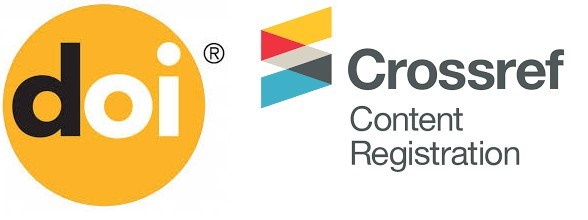Arabic Computer Syllabus Model Based On 21-st Century Skills
DOI:
https://doi.org/10.32699/liar.v5i2.2202Keywords:
syllabus, Arabic computer, 21st-century skillsAbstract
Globalization and the acceleration of technology in the 21st century create a new paradigm in education. Teachers are not only required to transfer knowledge but also to equip their students with various 21st-century skills. This study aims to produce a syllabus for Arabic Computer courses based on 21st-century skills at the Arabic Language Education Study Program, Faculty of Language and Arts, State University of Jakarta. This development research uses the Successive Approximation Models 1 (SAM1) model, combined with the Merdeka Belajar Kampus Merdeka syllabus model. This study used data collection methods through questionnaires for expert team assessment and interviews for one-on-one trials. Data analysis used the Guttman scale, namely a score of 1 for the answer "Yes" and 0 for "No." Based on the assessment results of a team of experts and supporting lecturers, the syllabus developed was considered very good and following the principles of developing 21st-century skills.
References
Arnyana, Ida Bagus Putu. 2019. “Pembelajaran Untuk Meningkatkan Kompetensi 4C (Communication, Collaboration, Critical Thinking Dancreative Thinking) Untuk Menyongsong Era Abad 21.” Pp. i–xiii in Prosiding: Konferensi Nasional Matematika dan IPA Universitas PGRI Banyuwangi, edited by D. P. B. Syahputra, H. As’ari, F. Ardiyansyah, E. Malis, B. Yohannes, and R. E. E. Susanti. Banyuwangi: Fakultas MIPA Universitas PGRI Banyuwangi.
Aslamiah, Aslamiah, Ersis Warmansyah Abbas, and Mutiani Mutiani. 2021. “21st-Century Skills and Social Studies Education.” The Innovation of Social Studies Journal 2(2):82. doi: https://doi.org/10.20527/.
Drago, William A., and Richard J. Wagner. 2004. “Vark Preferred Learning Styles and Online Education.” Management Research News 27(7):1–13. doi: 10.1108/01409170410784211.
Farisi, Mohammad Imam. 2016. “Developing the 21st-Century Social Studies Skills through Technology Integration.” Turkish Online Journal of Distance Education 17(1). doi: 10.17718/tojde.47374.
Griffin, Patrick, Barry McGaw, and Esther Care. 2012. Assessment and Teaching of 21st Century Skills.
Junaidi, Aris, Dewi Wulandari, Syamsul Arifin, and Hendrawanto Soetanto. 2020. Panduan Penyusunan Kurikulum Pendidikan Tinggi Di Era Industri 4.0 Untuk Mendukung Merdeka Belajar-Kampus Merdeka. IV. edited by S. S. Kusumawardani. Jakarta: Direktorat Jenderal Pendidikan Tinggi Kementerian Pendidikan dan Kebudayaan.
Muluk, Safrul, Habiburrahim Habiburrahim, and Siti Rechal Rechal. 2020. “Students’ Awareness and Perception Towards Learning Styles.” JURNAL ILMIAH DIDAKTIKA: Media Ilmiah Pendidikan Dan Pengajaran 20(2). doi: 10.22373/jid.v20i2.5229.
Piirto, Jane. 2011. Creativity for 21st Century Skills How to Embed Creativity into the Curriculum.
Salman Sabbah, Sabah. 2018. “English Language Syllabuses: Definition, Types, Design, and Selection.” Arab World English Journal. doi: 10.24093/awej/vol9no2.9.
Skills, Partnership for 21St Century. 2011. “Framework for 21st Century Learning.” Partnership for 21st Century Skills. doi: http://www.21stcenturyskills.org/documents/framework_flyer_updated_jan_09_final-1.pdf.
Tan, Jennifer Pei Ling, Suzanne S. Choo, Trivina Kang, and Gregory Arief D. Liem. 2017. “Educating for Twenty-First Century Competencies and Future-Ready Learners: Research Perspectives from Singapore.” Asia Pacific Journal of Education.
Wintarti, A., Abadi, and D. K. Fardah. 2019. “The Instructional Design of Blended Learning on Differential Calculus Using Successive Approximation Model.” in Journal of Physics: Conference Series. Vol. 1417.
Downloads
Published
Issue
Section
License
Authors who publish with this journal agree to the following terms:
a. Authors retain copyright and grant the journal right of first publication with the work simultaneously licensed under a Creative Commons Attribution-ShareAlike 4.0 International License. that allows others to share the work with an acknowledgement of the work's authorship and initial publication in this journal.
b. Authors are able to enter into separate, additional contractual arrangements for the non-exclusive distribution of the journal's published version of the work (e.g., post it to an institutional repository or publish it in a book), with an acknowledgement of its initial publication in this journal.
c. Authors are permitted and encouraged to post their work online (e.g., in institutional repositories or on their website) prior to and during the submission process, as it can lead to productive exchanges, as well as earlier and greater citation of published work (See The Effect of Open Access).












